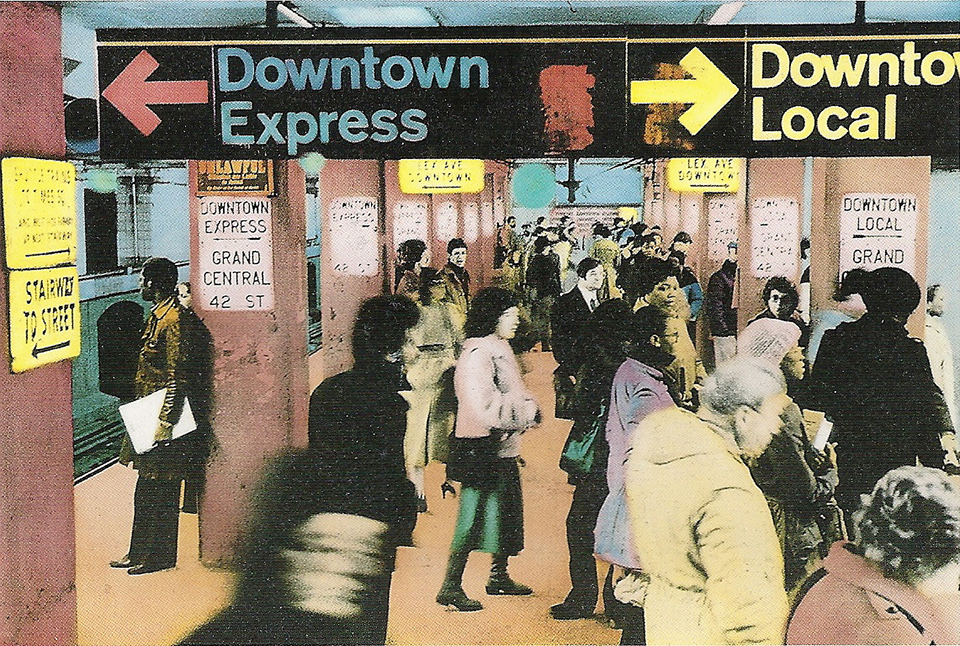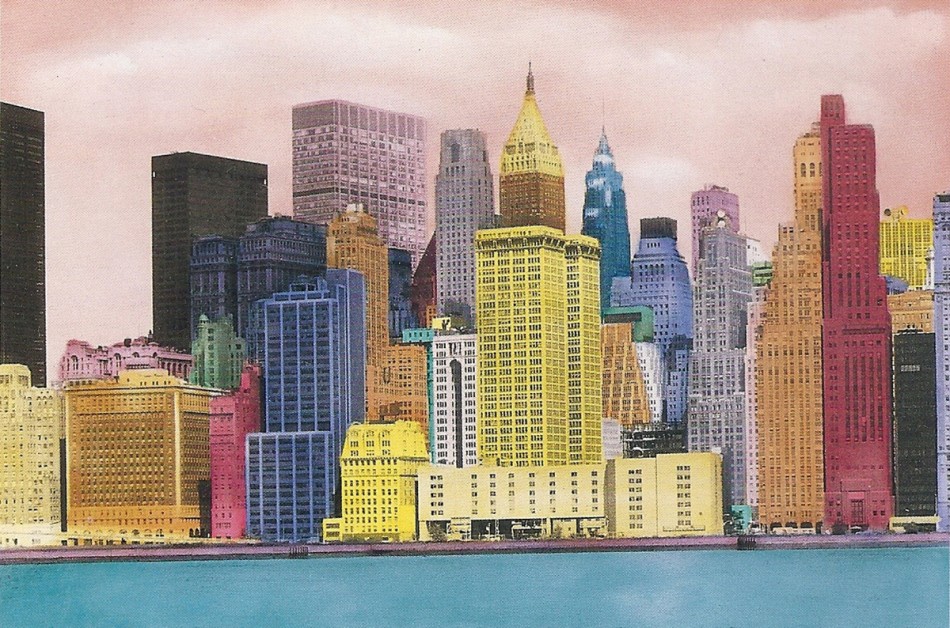“One belongs to New York instantly, one belongs to it as much in five minutes as in five years.”
— Thomas Wolfe
Last week, three years after moving to New York, and two and a half years after marrying my lovely American wife, I received my Green Card in the mail. According to the letter which came attached, I am now a Permanent Resident of the United States of America, although to me my new immigrant status still seems excessive. After all, I’ve only ever been to twelve of the fifty states, and generally never leave the island of Manhattan except to return to Europe. As John Lennon once said to an interviewer in reference to his deportation struggle, “Couldn’t they just ban me from Ohio?”
A colleague of mine left me a note which read “Congratulations, official New Yorker!” It was a sweet thought but one which left me confused. I wasn’t a New Yorker, just a Brit who got lucky enough to live here. Naturally, it begged the decidedly abstract question: when does a “New Yorker” become a New Yorker? I’ve heard it said that you’re only a New Yorker after you’ve lived here a certain number of years, but if so, how many? Whatever the answer may be I’m probably a few years away yet, but I’ve certainly feel like I’ve put in enough overtime studying this city to have shaved a few months off my sentence.
I know I have no greater right to be here than anyone else in my boat, but I doubt most new arrivals devote hours to meticulously researching the shooting locations of long-forgotten New York movies. Nor do they embark on a pilgrimage to the Upper West Side to photograph the city’s last remaining phone booths, or spend entire afternoons seeking out Manhattan’s humblest coffee shops on a self-assigned mission in search of the city’s finest egg cream. Nor do they drop $60 on an original 1974 Massimo Vignelli subway map (an exorbitant amount of money for something that was once handed out for free).
While I recognize that not everybody cares about these things (and nor should they), I also believe that a person is obligated to obtain an historical, cultural and social sense of their city, especially their chosen city, because I consider it important to understand where you are and what that means. When I see a group of young people in untucked shirts and trilbies exit a Barbie-pink stretch Hummer on Avenue B, it makes me sad that none of them look up from their iPhones long enough to realize they’re standing feet away from the former home of Charlie Parker. That is, if they know who Charlie Parker is to begin with. Personally I think they should make all would-be New Yorkers take a test. Anyone who fails has to spend six months in New Jersey swotting up on their Newyorkology. That would hopefully weed out all those who consider food trucks to be the height of urban chic.
Edward Hopper once said you get the greatest sense of a place upon arriving or leaving for the first time. I think he was right. To this day I still get a slight twinge the day before I leave New York or when heading to the airport at dawn, as if I begin to appreciate the greatness of the city knowing I’m going to be away from it (if only for a few days). But each time I return to Manhattan after a trip, I get a rush of the same excitement and awe that I felt the first time I got in the back of a yellow cab. Somehow the city looks, smells, even feels different. Streets I walk on every day are seen in a different light. Even the people with whom I jostle for space on the crowded sidewalk suddenly appear exotic and appealing. Could this be the same town I left less than a week earlier? That elusive magical feeling hits me like the first few seconds of “(Love Is Like A) Heatwave” and — at least for the duration of that cab ride — I remember why I always wanted to be here in the first place.

Maybe you become a New Yorker the first time New York feels like home. Not long after I moved to the U.S. I took a trip to visit my girlfriend’s family in West Virginia. It was the first time I’d left New York City, and I remember feeling an unexpected sense of blasé familiarity when I landed back at JFK, an airport I had until that moment associated only with extreme excitement and anticipation. Now, it was other places gave me that feeling; New York had become “normal”. The slightly bittersweet compromise but inevitable consequence of living somewhere you’d always dreamed of living is that that very special feeling — that urgent, frantic desire you once felt, perhaps even years before you got here — is lost. Of course, it’s replaced with something arguably much better: the real and more rewarding experiences that come with actually living somewhere.
Colson Whitehead says “You are a New Yorker when what was there before is more real and solid than what is here now.” I can definitely relate to that, and I’m always surprised just to what extent the New York in my head differs from the city I experience everyday in 2010. I confess to occasionally standing on street corners and squinting, trying desperately to recapture the sensation of walking down Broadway for the very first time, or even attempting to recall how I’d imagined New York all those years before I ever arrived. But whenever I start to wonder if this is a city best enjoyed through books and movies or my own imagination, something will jerk my senses suddenly and it all comes flooding back: early evening light on the side of a building, the sudden sight of one of the last Checker cabs bouncing down Seventh Avenue, or the inviting mix of pizza and Martha & The Vandellas floating out onto the sidewalk on a July afternoon. It’s all here, and it’s all real.
My daily commute is punctuated by the clatter of storefronts opening, a siren’s intermittent wail, hosed sidewalks, and, as I stand waiting for lights to change, the urban morning aromas of coffee, perfume and garbage. My heart lifts as I turn onto Irving Place and glimpse the Chrysler Building, half-hidden by summer’s haze or gleaming in the crisp winter sun. On the walk home I always remember to turn and look the wrong way up Lexington Avenue, to glance at all that steel and chrome rendered golden by dusk. Just in case I ever forget what I’m doing here.
In his 1949 essay “Here is New York”, E.B. White eloquently suggests there are three New Yorks, that of the native, the commuter, and the immigrant, claiming “the greatest is the last — the city of final destination, the city that is a goal.” He says the immigrants give the city “passion”, which accounts for its “high-strung disposition, its poetical deportment, its dedication to the arts, and its incomparable achievements.” Certainly New York, more than any other city in the world, owes its very existence — social, cultural, political, even physical — to the steady influx of people who have dared to dream that this could be their home.
Jeremiah Moss says “a New Yorker is someone who longs for New York.” While it’s true that not everybody who lives in New York automatically becomes a New Yorker, by the same token he implies you can be a New Yorker without actually living here. New Yorkers are a unique breed unto themselves, and maybe it’s enough to be one in thought and spirit. Maybe New York really is a state of mind. Maybe you’re a New Yorker when you can’t imagine living anywhere else. In which case, though my adjustment of status was only recently made official, maybe I’ve been a New Yorker all along.
All artwork by Elizabeth Lennard.
